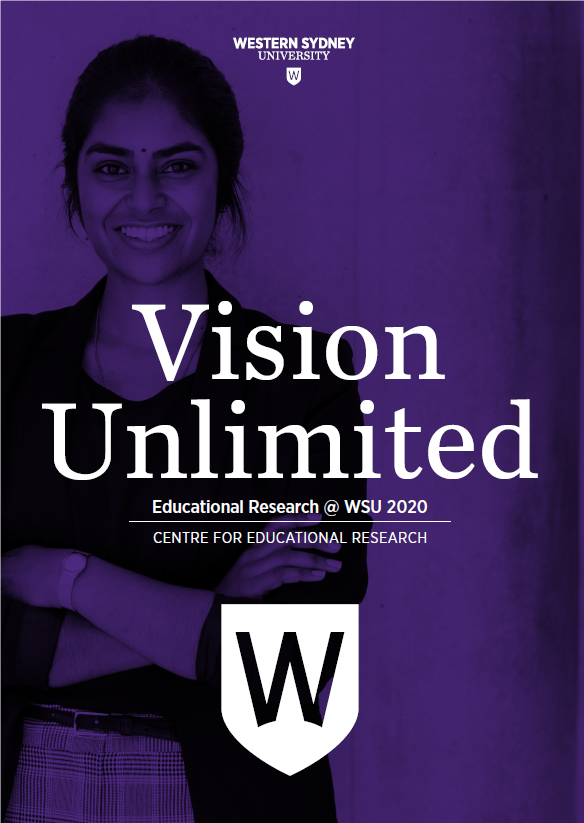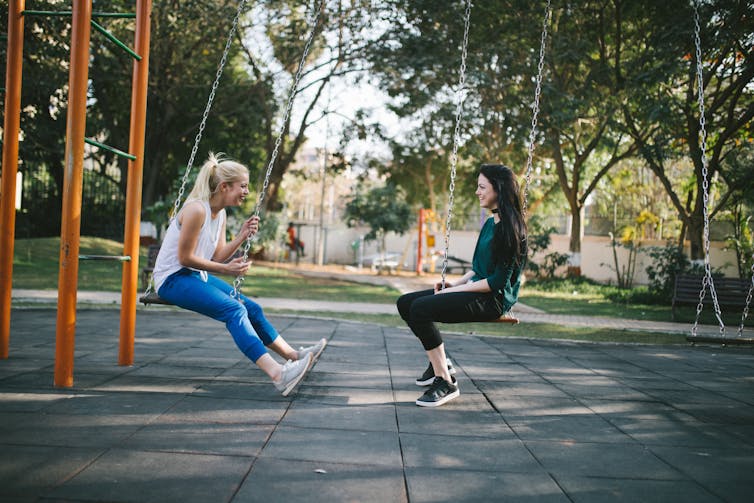Authors: Susanne Gannon, Jacqueline D’warte, Rachael Jacobs & Loshini Naidoo
For just over three months from late June through to October 2020, we surveyed young people aged 15-19 about their feelings, thoughts and experiences through periods of online learning in Australian schools. As researchers concerned about educational justice and inclusion, we were inspired and guided by research led by Professor Dorte Marie Sondergaard in Denmark.
Privileging the voices and perspectives of young people seemed particularly important when public discourse initially positioned young people as careless carriers of the virus. As our Danish colleagues noted, beyond conventional learning outcomes, the sociality and relationality of schooling are central to young people’s lives and their sense of belonging and becoming (Hansen, Knage, Rasmussen and Søndergaard, 2020). At this already ‘intense, turbulent and challenging’ time, how would young people experience the shutting down of these domains of social life? What other modes of sociality have opened for them? What were their perspectives on online learning, on themselves as learners? We drew our design from the Danish research[i], which comprised an anonymous online survey (or ‘written interview’) of open-ended questions, interviews by Zoom with individual students, and artefacts produced by students responding to the pandemic. While the Danish work provided a rapid response at the time of the shutdown, and was completed by the end of June, the Australian team secured university ethics approval on June 19 and opened the survey on June 23rd. The survey link was distributed and promoted via social media. It remains open at this link for Australian secondary school students aged 15 and over.
Youth in the Time of Coronavirus survey
In the online survey, students were asked to reflect on the period of lockdown that they had experienced earlier in the year, between late March and late May. Along with the links to youth mental health resources that were included in all components of the research, this retrospective view was an appropriate strategy for minimising risk of harm in asking students to reflect on sensitive and upsetting issues. Lockdowns were reimposed in Victoria while our survey was underway, and in another component of the study, interview participants have reflected directly on their experiences of that extended second round.
Here we present an initial descriptive account of findings so far from the anonymous survey. At the time of writing, we have responses from 71 current secondary school students, compared to the 77 responses from Danish school students. However, our survey also provided scope to opt for an interview rather than provide written responses so by the first week of October detailed responses were received from 49 participants who continued to the end of the survey, contributing 308 individual text responses to seven substantive questions.
As the context remains volatile in parts of Australia, our survey remains open. Thus far, 59% of participants were from NSW, 23% from Victoria, 8% respectively from Queensland and Western Australia, 2% from NT and no students from ACT, SA or Tasmania. The younger age group were most represented with 37% aged 15, 27% aged 16, 22% aged 17, and 6% and 8% respectively aged 18 and 19. However responses are well distributed between year levels, with 31% of participants in Year 12, 22% in Year 11, 21% in Year 10, and 25% in Year 9. More than two-thirds of respondents were female.
Discussion
As educational researchers and teachers ourselves, we were particularly interested in young people’s experiences of going to school online. Their views about the first period of school closures were overwhelmingly positive. For many young people online learning offered flexible timetables, self-paced learning and extended free time. There was a broad agreement that content was delivered at a quicker pace. While this enabled many young people to stay focused and get more work done, for others a perceived increase in workload made it difficult to complete work and stay focused and motivated. A commonly expressed disadvantage was the inability to learn with teachers and peers in live classroom interactions, particularly in discussion-based or practical subjects. Many participants desired ongoing teacher support and timely feedback particularly when learning new concepts and this was most pronounced for Year 12 students who expressed increasing anxiety and a lack of confidence about their Year 12 results.
The missed sociality of schooling was of concern to us, and we were curious about how school lockdowns may have contributed or not to vulnerability experienced by young people. We asked students what they missed, and whether there was anything about school that they were glad to avoid. Students predominantly missed spending time with their friends at school, and this was also what they most looked forward to after the lockdown restrictions eased. Many students missed face-to-face class interactions, practicals, personalised support from their teachers, extra-curricular school activities, performances and sports, and school routines and ‘normality’. Others were glad they could avoid contact with ‘difficult’ classmates or escape the structured timetable, exams, and travel to and from school. One student appreciated ‘being able to use the toilet at home and wash with soap as my school doesn’t have soap’. Most however enjoyed the flexibility about how and when they studied. When asked what they most looked forward to when everyday life resumed, most of the students again stressed the importance of seeing their friends but also mentioned previously taken for granted routines, such as playing sport, eating out, going to work, and just having the freedom to go outdoors.
During lockdowns, young people were agentic and sometimes discerning users of social media platforms to help them get through this time. They used social media more than before, particularly to remain connected and check in with friends. As well as keeping in touch with their closest friends, they reached out and reconnected to old friends they had lost touch with or saw infrequently. The platforms were mainly the same ones they had used previously: Instagram, followed by Snapchat, Facebook, TikTok. Young people also connected with information and ideas through social media. They gauged the reliability of sources, for example by using the ABC news app, learning more about what was happening outside Australia, choosing to follow ‘positive and realistic accounts’ and disconnecting from information sources that were becoming ‘anti-safe’ in their COVID messaging. Distraction through entertainment was also very important. Engagement with TikTok increased. Young people learned new dances and made videos themselves or with their siblings, though did not always post them. They related to young people like them who were sharing quarantine experiences via TikTok. Of our respondents, one person said that ‘scrolling constantly’ had affected their mental health.
Our questions dug further into the nature and extent of contact with friends. There seemed to be a move towards platforms that are synchronous and camera linked so they could see each other, because in COVID times text alone was ‘not enough’. Zoom, Facetime and other group chats were used for regular chatting, often daily or multiple times per day. They also facilitated celebration of special occasions, and the continuation of special interest groups such as Scouts and Church groups. Often students initiated connect with each other to study together and help each other with their work. Several students mentioned games they played online with friends ranging from Call of Duty, and Animal Crossing through to Pictionary. However, despite acknowledging the increase in time online, students told us that this was warranted by their ‘beneficial social aspect’.
We asked our participants to reflect on how and whether they met up with friends offline during the time their schools were online. More than half of the respondents did not meet anyone outside their family during lockdown, and only started to see other people in person after restrictions eased. If they met during the time their schools were closed, numbers were small and met in safe outdoor public settings like parks, ovals and gardens. They met for fitness and connection: playing with a frisbee, netball or football; walking around the suburb; walking dogs; bike riding, beach swimming, or sitting at a safe distance to talk about life. When restrictions eased, one attended a small bonfire birthday party in a backyard, and another visited the last drive-in theatre in Sydney. Some young people met with one other person (friend, cousin or boyfriend) at each other’s houses or for a sleepover. Sometimes they followed this with a fortnight of quarantine. Following the guidelines given by authorities was very important. Their responses showed a high degree of responsibility and care. One person noted that because they live with grandparents, the risk was ‘WAY too high to even process that kind of thought’.
Young people were concerned for the future, with regard to social distancing, health and hygiene, but more broadly the sense that COVID-19 may be characteristic of other incidences of widespread vulnerability, chaos or unpredictability in their lifetime. Participants said their understanding of health and hygiene was profoundly altered, and many didn’t see a return to ‘normal’ in the near future. More broadly, participants felt an appreciation for individual freedoms of movement, spending time with extended family and friends, and some noticed that family units became closer and more connected. A few students applied the learnings of COVID-19 to broader issues in their futures. For example, one participant said:
I think Corona has given us a glimpse of what could happen if we do not act on Climate Change. It has made us realise it is completely possible for a government to act rapidly for an emergency and for our lives to be turned upside down in a manner of days. Personally for me, it has made me more aware of how much we take things for granted, and how we as Australians have been living in a bubble of privilege for a long time. It has made me scared that the world will either emerge from this more united, and working globally together to prevent other international disasters and emergencies such as conflict, poverty and climate change or we will remain isolated with more extremist powers as our governments.
What next?
We are currently analysing our Australian interview data and preparing a detailed analysis of our survey findings in preparation for a comparative analysis of findings with our Danish colleagues in the coming months. We have also begun to collect creative and reflective artefacts (writing, images, etc) that have been produced by young people under the guidance of their teachers within curriculum contexts. We are keen to hear from more young people about this pandemic year, and to follow them through their adjustments to what our politicians are calling a ‘new normal’. Our heartfelt thanks to the young people who have so generously shared their feelings and their fears with us so far.
Get in touch!
Please contact the researchers directly for further information about any aspect of the study (via S.Gannon@westernsydney.edu.au). Access Youth in the Time of Coronavirus survey here. If you prefer an interview (online via Zoom), please register your interest in the survey portal or contact Susanne or one of the other researchers.
References
Hansen, Helle Rabøl; Knage, Frederikke; Rasmussen, Penille and Søndergaard, Dorte Marie (2020) Savn, sårbarhed og socialitet blandt unge under Corona (Trans. Deprivation, vulnerability and sociality among young people under Corona), In Forskning i unge og corona (Trans. Research on adolescents during Corona) (pp. 20-30). Aarhus University, Denmark.
Schliecher, Andreas. (October, 2020) The impact of COVID-19 on education – Insights from
Education at a Glance 2020. OECD.
[i] Why Denmark and Australia? Initially there were strong parallels between policy responses and experiences in both nations, however, over time, these diverged. Summer holidays began in Denmark, and in Australia, each state charted a different path through the pandemic. Victoria’s COVID crisis led to sustained lockdowns while other states returned to near normal conditions. As we write, Denmark has been praised internationally for its cautious and sensible opening to the new school year < https://www.cbc.ca/news/world/denmark-schools-covid-19-pandemic-1.5720508> and Victorian students will be returning to school throughout October. In terms of preparedness for learning online, the OECD (Schliecher, 2020, p. 17, Fig. 4) notes that in both Denmark (1st of 31 countries) and Australia (3rd), there were already very high rates of preparedness of teachers in lower secondary years to frequently or always use ICTs for projects and class work prior to COVID-19.





